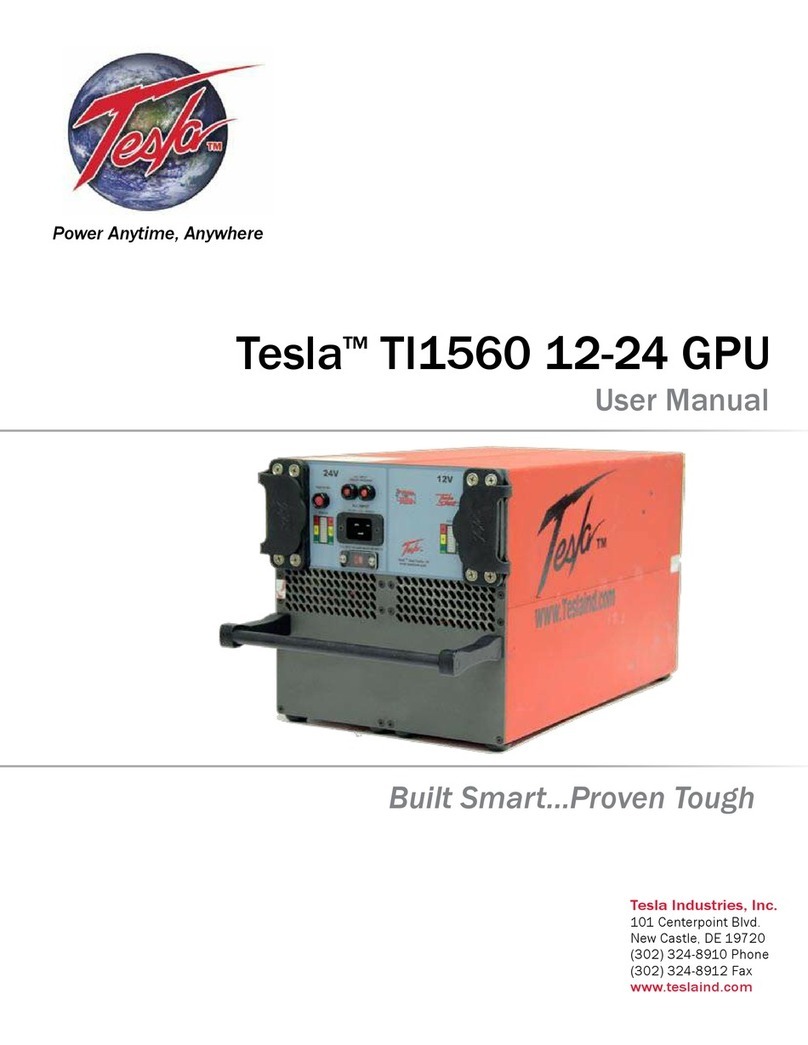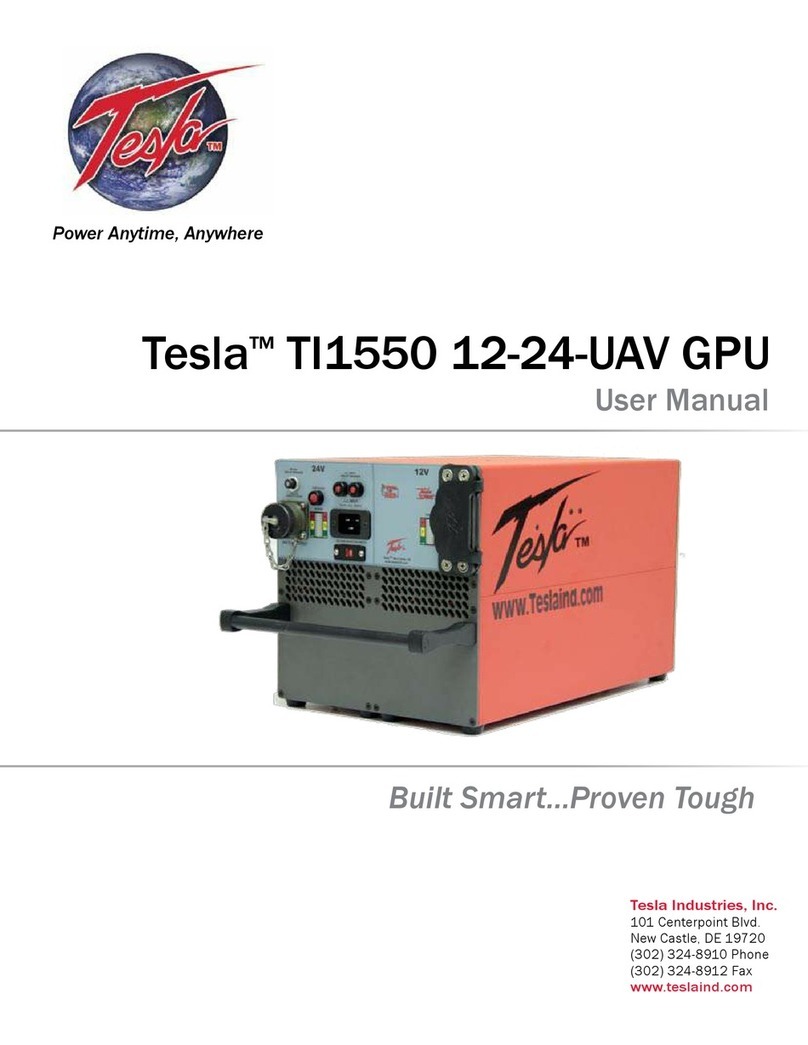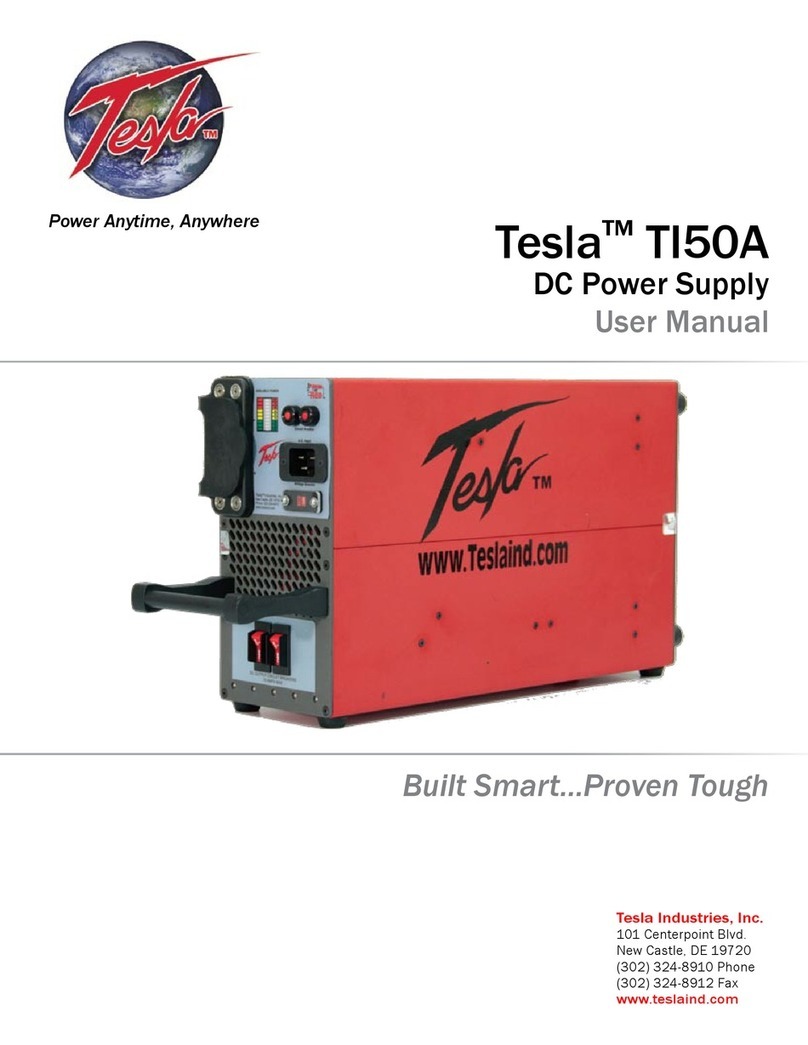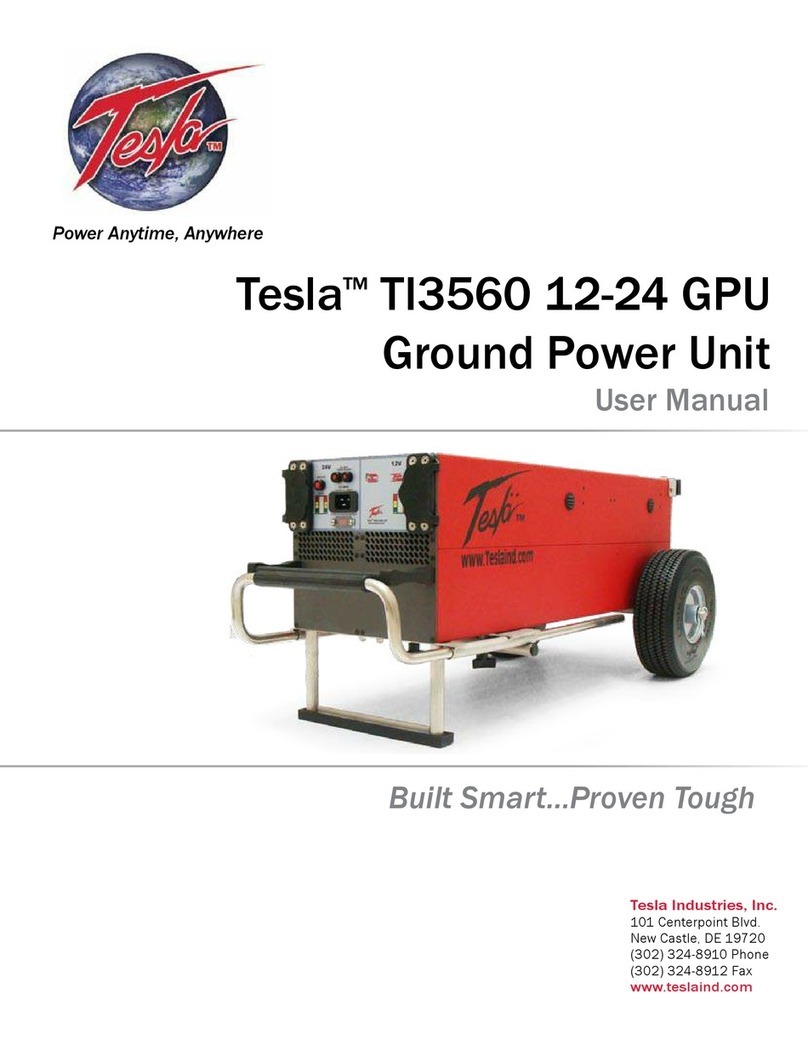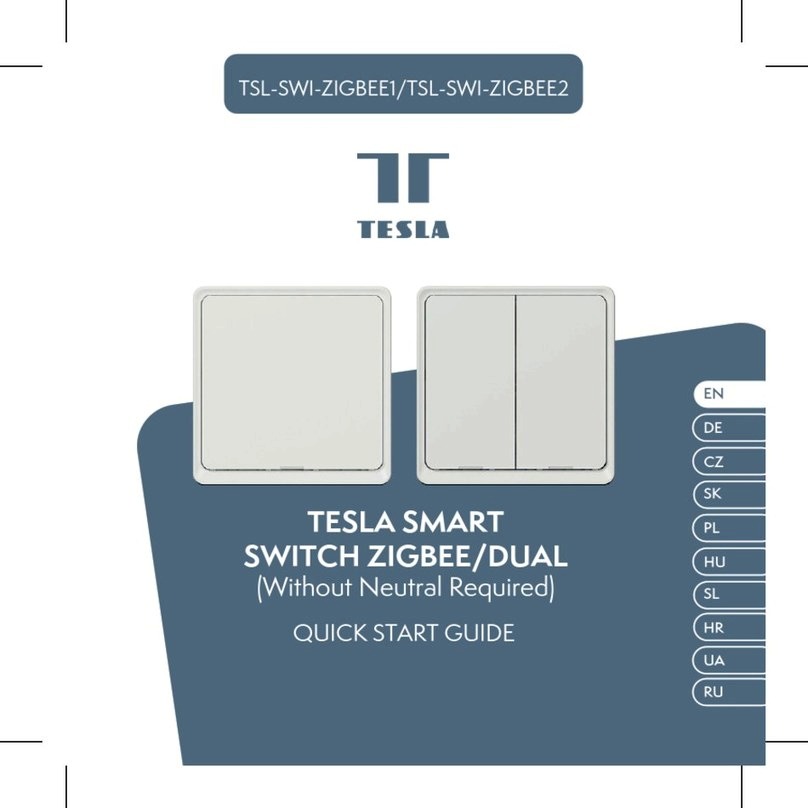Page 2 of 2
SECTION VII - PR E C A U T I O N S F O R SA F E HA N D L I N G & US E
Steps to be taken in case material is
released or spilled Avoid contact with acid materials. Use soda ash or lime to neutralize. Flush with water.
Waste Disposal Method Dispose of in accordance with Federal, State, & Local Regulations. Do not incinerate. Batteries should be
shipped to a reclamation facility for recovery of the metal and plastic components as the proper method of
waste management. Contact distributor for appropriate product return procedures.
SECTION VIII - CO N T R O L ME A S U R E S - NO T AP P L I C A B L E
SECTION IX - OT H E R RE G U L A T O R Y IN F O R M A T I O N
Tesla™ Industries GPU/MPU batteries are starved electrolyte batteries, which means the electrolyte is absorbed in the separator material. The batteries
are also sealed.
NFPA Hazard Rating for Sulfuric Acid:
Health (Blue) = 3 Flammability (Red) = 0 Reactivity (Yellow) = 2 Sulfuric Acid is Water Reactive if concentrated.
U.S. DOT: Tesla™ Industries GPU/MPU batteries are classifi ed as Nonspillable. They have been tested and meet the nonspillable criteria listed in 49
CFR § 173.159(f) and 173.159a(d)(1).
Nonspillable batteries are excepted from 49 CFR Subchapter C requirements, provided that the following criteria are met:
The batteries must be securely packed in strong outer packagings and meet the requirements of 49 CFR § 173.159a. 1. The batteries’ terminals must be protected against short circuit.2.
Each battery and their out packaging must be plainly and durably marked “NONSPILLABLE” or “NONSPILLABLE BATTERY”.3.
The exception from 49 CFR, Subchapter C means shipping papers need not show proper shipping name, hazard class, UN number and packing group.
Hazardous labels are not required when transporting a nonspillable battery.
IATA: Tesla™ Industries GPU/MPU batteries have been tested and meet the nonspillable criteria listed in IATA Packing Instruction 872 and Special
Provision A67. Nonspillable batteries must be packed according to IATA Packing Instructions 872. This means shipping papers need not show proper
shipping name, hazard class, UN number and packing group. Hazardous labels are not required when transporting a nonspillable battery.
These batteries are excepted from all IATA regulations provided that the batteries are packed in a suitable out packaging and their terminals are pro-
tected against short circuits.
IMDG: Tesla™ Industries GPU/MPU batteries have been tested and meet the nonspillable criteria listed in Special Provision 238. Non-spillable batteries
must be packed according to IMDG Packing Instruction P003. This means shipping papers need not show proper shipping name, hazard class, UN num-
ber and packing group. Hazardous labels are not required when transporting an nonspillable battery. These batteries are excepted from all IMDG codes
provided that the batteries are packed in a suitable out packaging and their terminals are protected against short circuits per PP16.
RCRA: Spent lead-acid batteries are not regulated as hazardous waste by the EPA when recycled, however state and international regulations may
vary.
CERCLA (Superfund) and EPCRA:
Reportable Quantity (RQ) for spilled 100% sulfuric acid under CERCLA (Superfund) and EPCRA (Emergency Planning Community(a) Right to Know Act) is 1,000 lbs. State and local reportable quantities for spilled sulfuric acid may vary.
Sulfuric acid is a listed “Extremely Hazardous Substance” under EPCRA, with a Threshold Planning Quantity (TPQ) of 1,000 lbs.(b)
EPCRA Section 302 notifi cation is required if 1,000 lbs. or more of sulfuric acid is present at one site.(c) EPCRA Section 312 Tier 2 reporting is required for batteries if sulfuric acid is present in quantities of 500 lbs. or more and/or if lead is(d) present in quantities of 10,000 lbs. or more.
Supplier Notifi cation: this product contains toxic chemicals, which may be reportable under EPCRA Section 313 Toxic Chemical Release (e) inventory (Form R) requirements.
If you are a manufacturing facility under SIC codes 20 through 39, the following information is provided to enable you to complete the required reports:
Toxic Chemicals CAS Number Approximate % by Wt.
Lead 7439-92-1 45-60
Sulfuric Acid 7664-93-9 15-20
SECTION X - AD D I T I O N A L IN F O R M A T I O N
The Tesla™ Industries GPU/MPU sealed lead acid battery is determined to be an “article” according to the OSHA Hazard Communication Standard and
is thereby excluded from any requirements of the standard. The Material Safety Data Sheet is therefore supplied for informational purposes only.
The information and recommendations contained herein have been compiled from sources believed to be reliable and represent current opinion on the
subject. No warranty, guarantee, or representation is made by Tesla™ Industries, as to the absolute correctness or suffi ciency of any representation
contained herein and Tesla™ Industries assumes no responsibility in connection therewith, nor can it be assumed that all acceptable safety measures
are contained herein, or that additional measures may not be required under particular or exceptional conditions ore circumstances.
*N/A or Not Applicable - Not applicable for fi nished product used in normal conditions.






